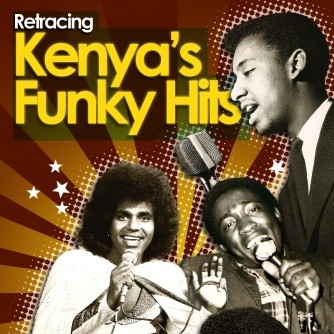Retracing Kenya’s Funky Hits
Retracing Kenya’s Funky Hits
The work of Ketebul Music in retracing genres and makers of Kenyan popular music from yesteryears is making an important contribution to several things. The first is the informative content that this work avails to print media, radio and television broadcasting. The second contribution has to do with debates on Kenyan identity since this work examines the moments and practices that have shaped Kenya’s increasingly cosmopolitan cultural heritage. These Retracing projects demonstrate the extent to which Kenyan culture is the constantly shifting sum of many layers borrowed over time from local ethnic traditions and diverse global influences that include American country, Christian hymns and Congolese rhumba amongst many others.
The story of Kenya’s Funky Hits is also the story of the growth of the city of Nairobi. From its popular entertainment spots like Starlight and Arcadia to the aspirations of city youth in peer-enforcing estate gangs with boastful names like “Sicheki” and Pumwani Tornadoes. This work also outlines the genesis of a social networking that preceded the digital age. Without a doubt, the radio salaams (greetings) clubs hosted by the Voice of Kenya (VOK) in the decolonizing years forged a sense of commonality between young people growing up in far-flung diverse places such as Kakamega, Mombasa, Nyeri, Nairobi and Kisumu as they converged around their radio sets listening to the same songs drawn from local artistes and from international stars. It emerges from the narrative contained here that the work of forging a national identity was in part achieved by these radio listening moments that included the ubiquitous, witty salaams hailing new trends or discouraging vile practices. By the early 1990s, pithy radio greetings and ujumbe (messages) like: “lipeni madeni za wenyewe” (pay up your debts) were cautionary tales that reflected the values of the nation and spoke against the growing culture of corruption at all levels.
As the debates on (negative) “foreign” influences on Kenyan music now dwell on a denunciation of American Hip Hop it is interesting to see from the documentary in this multi-media package the ways in which American funk and soul music strengthened the instrumental skills of local musicians. It emerges then, that this idea of Kenyan music being influenced by global practices is not new. And, what is frowned upon as “foreign” and degraded in one era actually builds the blocks of future cultural practices that are embraced by succeeding generations without anxieties about slavish worship of “other peoples’ ways” and fears about a loss of local identity.
Retracing Kenya’s Funky Hits brings back into the public domain cultural actors whose life and work enriched the lives of Kenyans through the 1960s, 1970s and 1980s. These are singers, song-writers, musicians, club-owners, media workers and other music promoters who worked to give Kenyans a new grammar to express their experiences – from Slim Ali saying “You Can Do It” to VOK’s Abdul Haq repeatedly asking “do you know where your children are” and The Mighty Cavaliers warning us to prepare for more of whatever in “Mambo Bado”. The songs discussed in this volume give us a sense of the ambitions and the challenges of these pioneering urban musicians, the meaning that they gave to local existence then, the ties that they forged beyond Kenya and the ways in which the local music industry has evolved over time despite the half-hearted support from the state and its institutions.
With this third publication in the Retracing Kenyan Music series, Ketebul has established its niche as an innovative cultural archive. The collection joins Retracing the Benga Rhythm and Retracing Kikuyu Popular Music in affirming the value of urban heritage and the recent cultural past. It brings forgotten sounds and images back into public circulation in formats that are accessible to a new generation of listeners and viewers. Indeed, Ketebul’s work is important because it takes up the social responsibility of making audio and audio-visual content from yesteryears available to future generations for their use and re-use.
Dr. Joyce Nyairo



